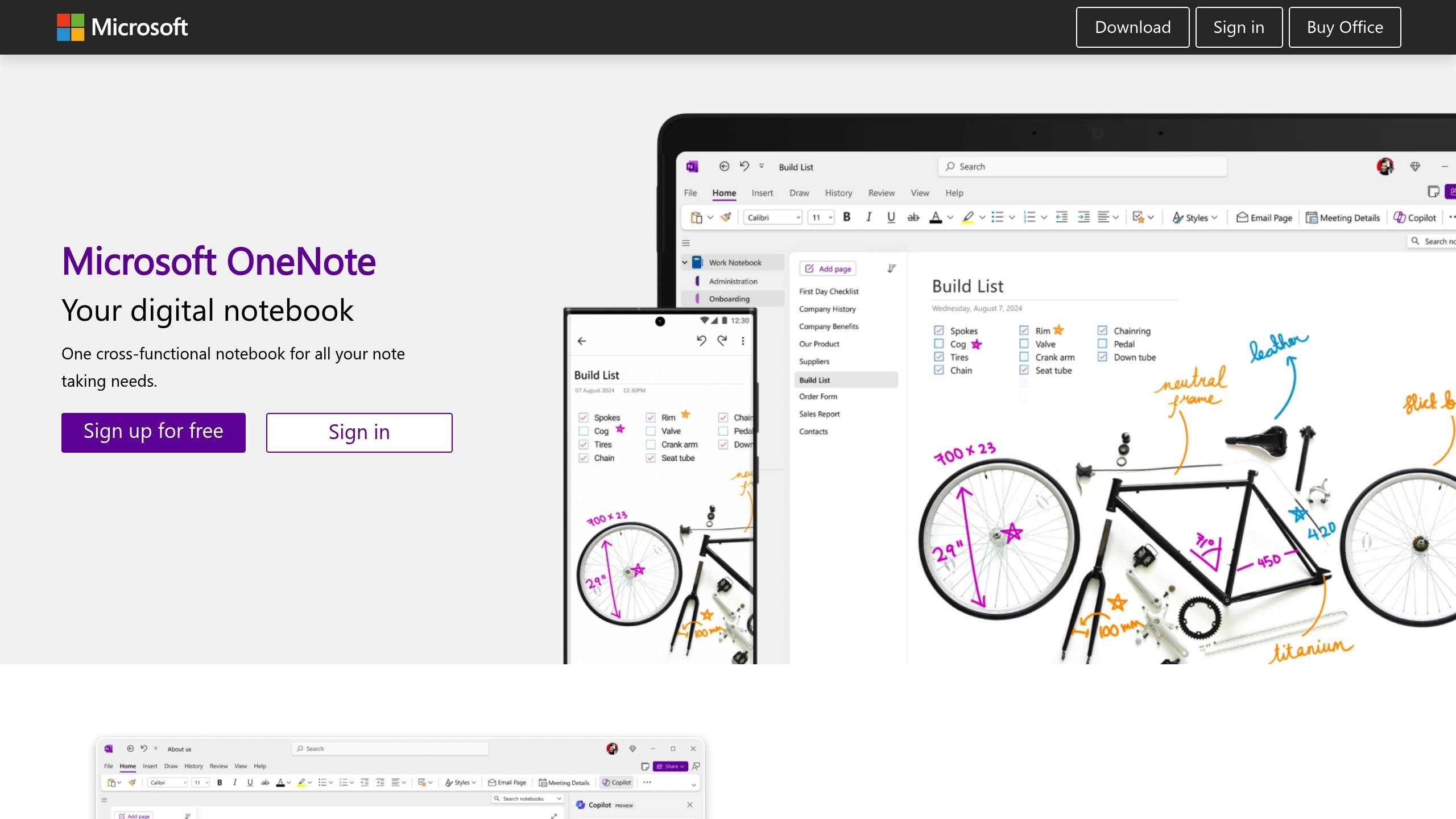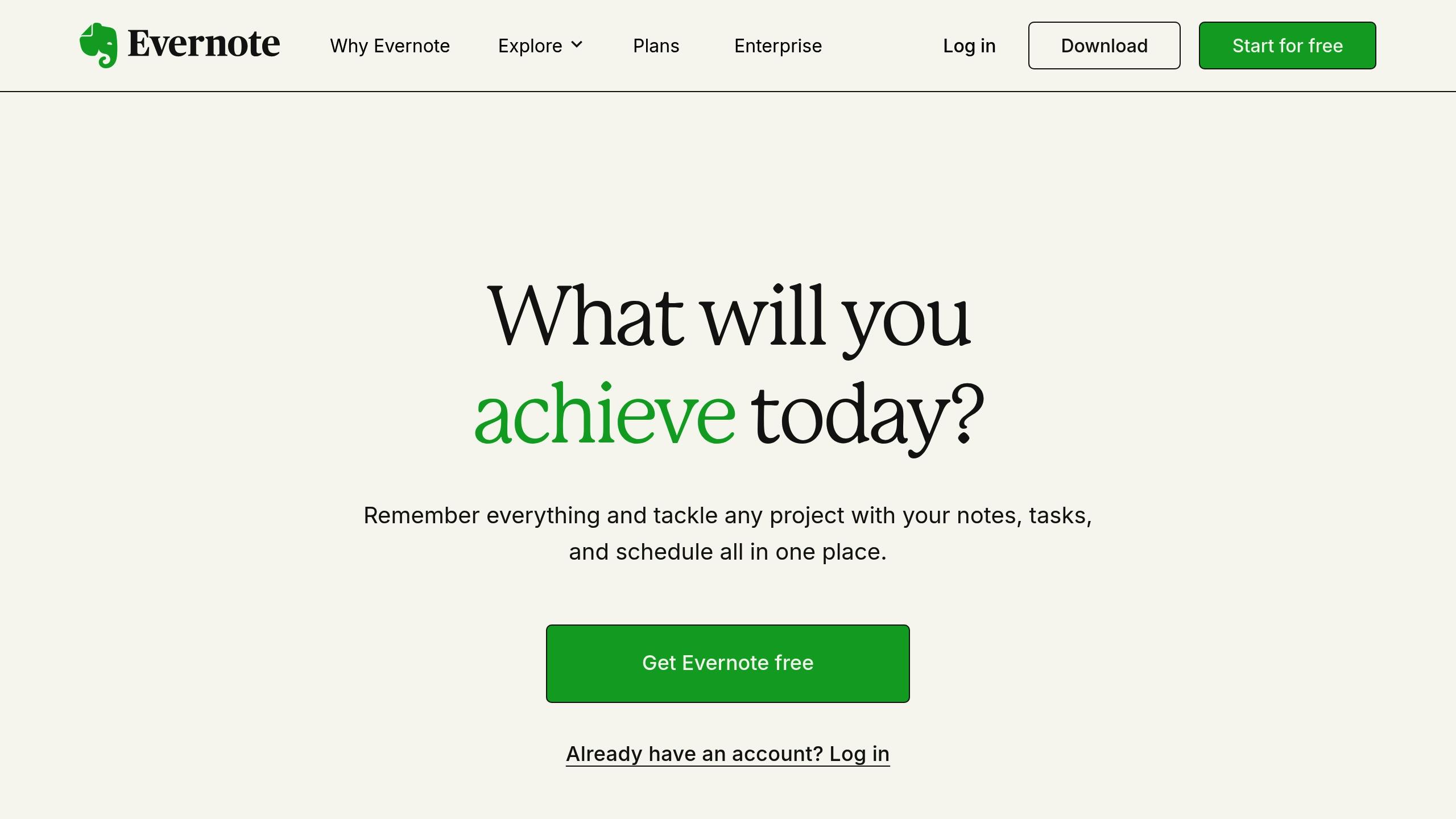
Cornell Note-Taking Method: The Digital Adaptation for Gen Z Students
Key Highlights:
- What is it? A structured note-taking system with sections for notes, cues, and summaries.
- Why it works: Boosts memory retention when reviewed within 24 hours.
- Gen Z habits: 85% combine digital and handwritten methods; 98% own smartphones.
- Go digital: Apps like Intellecs.ai, Notion, and OneNote enhance the Cornell Method with AI tools, flashcards, and collaboration features.
Quick Comparison of Cornell Note-Taking Apps
| Feature | Intellecs.ai | Notion | OneNote/Evernote |
|---|---|---|---|
| AI Assistance | Built-in | Limited | None |
| Flashcards | Auto-generated | Manual only | Requires other apps |
| Searchability | Context-aware | Basic | Full-text search |
| Collaboration | Real-time sharing | Group tools | Limited |
Why it matters:
Digital Cornell Notes combine the proven effectiveness of the original method with modern tech tools to make learning more efficient for today's students. Ready to upgrade your study game? Dive in!
Setting Up Digital Cornell Notes
Choose Your Note-Taking App
Start by selecting a note-taking app that suits your needs. Here are some options:
- Intellecs.ai: Combines AI-powered note-taking with tools like flashcard creation and active recall. This all-in-one setup saves time and avoids switching between apps, making it a great choice for students who prefer streamlined workflows.
- Notion: Known for its flexibility and collaboration features. While it offers AI assistance and excellent organization tools, it doesn't include built-in flashcards, so you'll need extra tools for active recall.
- OneNote and Evernote: Both are reliable for note-taking but require more effort to customize for the Cornell method.
| Core Features | Intellecs.ai | Notion | Other Apps |
|---|---|---|---|
| AI Assistance | Built-in | Limited | None |
| Web Search | Integrated | Separate tab needed | Separate tab needed |
| Flashcards | Auto-generated | Manual only | Requires other apps |
| Active Recall | Built-in | Not available | Requires other apps |
Once you've picked your app, create a Cornell template that makes the most of its features.
Design Your Cornell Template
Organize your digital notes into three main sections:
- Main Notes Area (70% of width): Use this for detailed notes. Add headers, key points, and media using markdown formatting. Set up quick text expansion for frequently used terms.
- Cue Column (20% of width): Dedicate this space to questions, tags for easy searching, and AI-generated review prompts.
- Summary Section (Bottom 10%): Include an expandable field for post-class summaries, AI-enhanced insights, and links to related materials.
This structure ensures your notes are easy to navigate and review.
Optimize Your System
Make your note-taking system efficient and consistent by adding these features:
- Color Coding: Assign specific colors for different subjects, highlight key ideas, and mark AI-generated content for clarity.
- Cross-References: Link related topics within your notes, connect to external resources, and build bidirectional links to deepen your understanding.
- Automation: Set up shortcuts for common formatting, enable automatic backups, and customize your app's AI tools to suit your preferences.
These enhancements will help you stay organized and get the most out of your digital Cornell notes.
Student Note Taking: Cornell Notes Template in OneNote

Taking Notes During Class
Set up your digital Cornell system and take your class notes to the next level with real-time, AI-assisted tools.
AI Note-Taking Help
Tools like Intellecs.ai can make your lectures more manageable by turning short points into detailed explanations, creating cue questions, summarizing topics, and connecting related ideas. For example, if you write "mitochondria energy production", the system can expand it into details about the ATP cycle, cellular respiration, and the enzymes involved.
Adding Photos and Videos
Multimedia can make your notes much more engaging and informative. Consider adding:
- Screenshots of lecture slides
- Photos of whiteboard diagrams
- Scientific figures from textbooks or handouts
- Links to YouTube videos for deeper explanations
- Timestamps from recorded lectures
- Animated demonstrations to visualize complex concepts
Make sure to give your files clear names and add short captions to keep everything organized.
Speed Up Your Note-Taking
Save time and focus more on understanding the material by using digital shortcuts. These can help you quickly add notes, insert cue questions, mark timestamps, generate AI summaries, and format your notes with markdown. Features like custom text shortcuts, auto-saving, and split-screen mode (to view slides and notes simultaneously) can make the process even smoother. Let technology handle the tedious parts so you can concentrate on learning.
Study and Review Methods
Digital tools are changing how we review and retain Cornell notes. Today’s apps combine AI with proven study strategies to make learning more efficient and effective.
Find Information Fast
Digital notes let you search instantly and thoroughly. For example, Intellecs.ai uses smart search technology that goes beyond simple keyword matches. It understands context and connects related concepts, even if different terms are used. Searching for "cell energy" in your biology notes might pull up content on mitochondria, ATP, and cellular respiration, helping you see the bigger picture. Some standout search features include:
- Full-text search: Quickly locate any word or phrase.
- Smart filters: Refine results by date, subject, or topic.
- AI-powered suggestions: Get recommendations for related content.
- Quick preview: View content in context without opening full notes.
These tools make it easier to review flashcards or work with study groups.
Study with Smart Flashcards
AI-generated flashcards simplify active recall by automatically identifying key concepts, definitions, and examples from your notes. Here's what the system offers:
- Pulls out key ideas and definitions.
- Creates question-and-answer pairs.
- Adds examples and context for better understanding.
- Links related flashcards for deeper learning.
- Tracks your progress and adjusts review schedules.
Using spaced repetition, the system ensures you review material just before it starts to fade from memory, boosting retention. These flashcards are also great for group study sessions.
Study Groups and Sharing
Digital Cornell notes make group study more productive. A single note-taker can share well-organized notes to guide discussions. Collaborative features include:
- Sharing specific sections while keeping the rest private.
- Adding comments or questions directly into shared notes.
- Tracking edits and contributions from group members.
- Exporting notes in different formats to suit various needs.
With Intellecs.ai, you can even use an integrated Q&A tool to quiz each other. The app generates questions from shared notes, helping the group approach material from different angles.
For $25/month, Intellecs.ai combines note-taking, flashcards, and AI tools into one platform, so you can focus on learning instead of juggling multiple apps.
Best Apps for Cornell Notes
Looking to enhance your Cornell note-taking process? Choosing the right app can make a big difference. Below, we break down some of the top apps that can simplify and improve your digital note-taking experience.
Intellecs.ai: Complete Study System

Intellecs.ai is a modern platform designed specifically for students. It combines AI-driven tools with a Cornell-style layout, all in a single interface:
| Feature | What It Does |
|---|---|
| Smart Note Organization | Automatically arranges your notes in the Cornell format |
| AI-Generated Flashcards | Turns your notes into study cards |
| Context-Aware Search | Connects related concepts across your notes |
| Active Recall System | Includes spaced repetition for better learning |
This app eliminates the need for juggling multiple tools by integrating notes, flashcards, and AI assistance. Currently, it works exclusively with PDF files and is desktop-focused, keeping the focus on studying rather than fancy customizations.
Using Notion for Notes

Notion offers a highly customizable workspace for creating Cornell notes. Priced at $22 per month with AI features, it includes:
- Customizable templates tailored to the Cornell method
- Support for adding images, videos, and other media
- Tools for group collaboration
- AI-powered assistance to refine your notes
However, Notion’s flexibility comes at the cost of a learning curve. Setting up your Cornell system and templates takes time. While it’s great for organizing notes, it doesn’t have built-in flashcard tools or active recall systems.
OneNote vs. Evernote

Both OneNote and Evernote are well-known platforms, but they take different approaches to note-taking:
| Feature | OneNote | Evernote |
|---|---|---|
| Layout Options | Flexible, free-form canvas | Structured, linear format |
| Media Support | Supports rich media like videos and drawings | Handles basic media like images |
| Cloud Sync | Integrated with Microsoft’s ecosystem | Independent cloud system |
| Search Capability | Full-text search across notes | Advanced filtering options |
Both apps offer dependable cloud syncing and cross-platform access. However, they lack AI-powered tools or built-in flashcard features. Many students pair these apps with tools like Anki (free on desktop, $25 for iOS) for a more complete study setup.
The best choice depends on your needs. Intellecs.ai offers an all-in-one package, Notion excels in customization, and OneNote/Evernote are great for straightforward note-taking. These tools show how digital solutions can bring the Cornell method into the modern era, catering to today’s study habits.
Conclusion: Modern Cornell Notes
Digital Cornell Notes align with the tech-savvy habits of Gen Z while maintaining the tried-and-true effectiveness of the original method. As Walter Pauk once said:
"Writing questions helps clarify meanings, reveal relationships, establish continuity, and strengthen memory"
This approach continues to resonate with students today. Abigail Snyder '24 shares:
"Digital note-taking allows me to get the benefit of handwriting my notes, which has scientific benefits for learning and retention, while also ensuring they are secure and accessible"
Digital versions of the Cornell method bring several key benefits:
| Aspect | Digital Advantage |
|---|---|
| Accessibility | Notes are stored in the cloud, making them secure and available on multiple devices. |
| Organization | Features like search and automated formatting help keep everything tidy and easy to find. |
| Collaboration | Sharing notes is quick and simple, improving group study sessions. |
| Retention | Tools like smart flashcards and spaced repetition boost learning efficiency. |
Want to make the most of this system? Consider investing in a tablet with palm rejection - perfect for drawing diagrams or writing out formulas for STEM subjects.